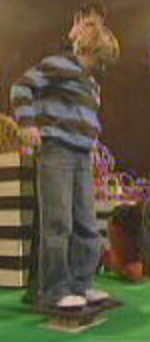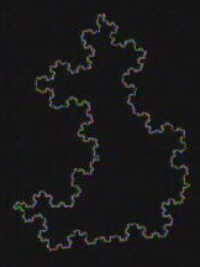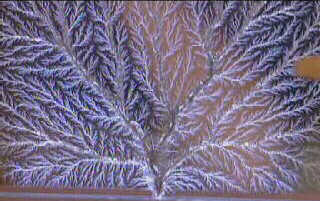Royal Institute Christmas Lectures 2006
The Story of the Elusive Shapes
Shapes
Perhaps the world's most perfect shape is the sphere. This lecture explores the rich and varied world of shapes. From small objects like a virus to very large objects like The Universe.

Egg Stand
The first involvement for the young viewers is to blow bubbles through a variety of shapes, to discover that despite the shape of the bubble source the bubble is always spherical. As the Professor explains this is Mother Nature being lazy, the sphere is the laziest shape. It is actually the shape with the least surface area and requires the least energy to maintain it. Mother Nature has been aware of this fact since the dawn of time, but it took mathematicians until 1884 to prove it.
The sphere is also the strongest shape, and to demonstrate this Professor du Sautoy uses some eggs. He informs us that mathematicians have calculated that twelve eggs will support the weight of a small boy. An egg is not spherical but the ovoid shape possesses the same strength properties.
The picture, right, shows the boy standing on a board which has been placed on the twelve eggs. The boy was lifted onto the board carefully to ensure even weight distribution.
Nature uses spheres for many things but how is a man-made sphere produced? The football is perhaps the most common sphere but it is made of a number of non-spherical, symmetrical panels. It was Plato who first experimented with combining symmetrical shapes to produces 3-D objects. The modern football is comprised of 20 hexagons and 12 pentagons.
Fractals
Professor Marcus du Sautoy poses a question: How long is the coastline of Britain?
- 18,000 km
- 36,000 km
- Infinite

Fractal Map
In an experiment a model coastline is measured by running a length of string around the coast then measuring the string. But repeating the same experiment with a much finer length of string, allowed the coast to be outlined in far greater detail producing a length over double the first result.
So, the coastline of Britain, as measured by Ordnance Survey, is 18,000 km but, if it were measured in greater detail it could easily be 36,000 km. Taking this theory a stage further suggests it could actually be infinite.
This is were the discussion moves onto fractals. Fractals are computer generated shapes that can be magnified repeatedly, infinitely in fact, which makes the length of a fractal infinite. Using a random fractal du Sautoy produced the image, to the left, that looks not dissimilar to a Medieval map of Britain.
So, the coastline of Britain could, at least mathematically, be infinite. A question where any of the three answers could theoretically be correct.
Fractals appear in many places in nature and lightning is perhaps the most spectacular. Russell Thomas comes in from the National Physical Laboratory to demonstrate artificial lightning. Using an electron beam from a linear accelerator he has charged an acrylic block, when this charge is released using an earthed spike, artificial lightning is produced within the acrylic block. The fractal nature of the lightning can be seen in the image, below, that is retained in the block.

Fractal Lightning
Fractals can exist within our own bodies. The lining of the human lung is a perfect example as each hair of the lining has hairs which have hairs.
The Universe
Professor du Sautoy attempts to explain the possible shape of our Universe. Is it a sphere or a torus (a bagel or doughnut shape) or is it, in fact, infinite? Is it three dimensional or four dimensional? This was a thought-provoking exercise as this is one of the problems that still face mathematicians and scientists.

